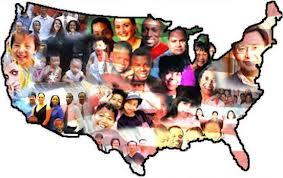
I heard a great report on a morning news show recently – that at least 150 CEO’s in the U.S. have publically committed to diversity and inclusion. One of the anchorwomen asked the CEO of PricewaterhouseCoopers, who represented the movement, if their targets or goals include women. She quickly added, “Women are half the population.” Was she suggesting that women should not be included in a diversity initiative because they aren’t “minorities”? That seems to me like an archaic (and irritating) notion.
The term “minority” literally means “fewer in number.” Dictionary definitions, however, include another notion: of being different from the social majority and subordinate to a dominate group. Being a “minority” is not about numbers. It is about social power. A group that outnumbers the “majority” but lacks power is a “minority.”
There are a number of projections that whites will be a “minority” in the U.S. within a few decades. Whites will become a smaller percentage of the total population at some point. But whites will surely retain greater social power for much longer.
Based on census data, women are, indeed, 50.8% of the U.S. population. While they represent a plurality of Americans, women rank below men in “social power.” Women in business (my usual focus) represent a smaller percentage at each rung of the corporate ladder. Catalyst’s most recent report shows how the numbers drop. In the S&P 500, women are about 44% of total employees, 36% of mid-level managers, 25% of senior level executives, 9.5% of top earners and 5.8% of CEO’s (and just under 20% of corporate board members). Women continue to earn less than men for the same work and overall. Women, particularly single women, are more likely to be poor. According to the National Women’s Law Center, “more than one in eight women and more than one in three single-mother families are poor.”
People of color (African American, Hispanic and Asian) will soon outnumber Caucasians. Women exist in slightly greater numbers than men. Yet white males have demonstrably more social power. Why? Because white males have both white privilege and male privilege. Privilege means being less likely to be subject to bias, prejudice and discrimination in the same way as are other people or groups. It can mean being able to live happily and not even see privilege – or its counterpart, bias. It means being able to deny the existence of privilege when you are a poor white male – one whose race and gender didn’t open the magic gates.
So, yes, women should be included in diversity and inclusion initiatives. Until women are proportionally represented in business leadership and high office, the pay gap is closed, and poverty doesn’t have a woman’s face, women will be “minorities.” Until racial bias doesn’t exist, people of color will be minorities. Initiatives to level the playing field should start with the acknowledgement of privilege and bias.